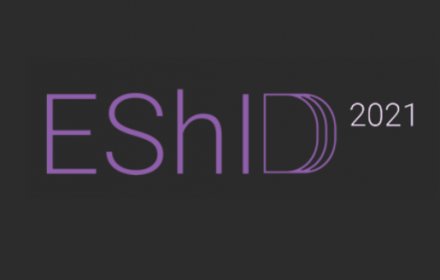

Date limite
22 Mar 2021
Publié: 13 Feb 2021

II Congreso Internacional Estéticas Híbridas de la Imagen en Movimiento: Identidad y Patrimonio
Valencia, Spain
La IIe Conférence Internationale Hybrid Esthetics of the Moving Image : Identity and Heritage est un lieu de rencontre pour les différentes disciplines impliquées dans l'étude des nouveaux médias, des études visuelles, de l'esthétique, de l'identité et de la théorie critique, ainsi que des stratégies de préservation du média audiovisuel.
Il s'agit d'une initiative du projet MICIU R+D+i eSHID : Estéticas híbridas de la imagen en movimiento. Videoarte español y dinámicas identitarias en el mapa global (2019-2021), axé sur la recherche, le transfert et la diffusion d'œuvres audiovisuelles réalisées dans notre pays à partir des archives ARES. Esthétique, identités et pratiques audiovisuelles en Espagne ; ainsi que le groupe de recherche Visu @ls. Culture visuelle et politique identitaire. Après la première édition, tenue en Novembre 2020 à la Faculté de Philosophie de l'Université de Salamanque et axée sur le thème de la migration, de la mondialisation et de l'interculturalité, en 2021 l'Universitat Politècnica de València prendra le relais.
La rencontre vise à susciter une réflexion critique parmi les chercheurs et les professionnels de différentes disciplines liées à l'art vidéo au niveau international. L'art vidéo est compris comme une ressource capable de générer des manifestations identitaires, comme un médium qui offre la reproductibilité, tout en questionnant la transmission du patrimoine en raison de sa fragilité et de son obsolescence. Ce large panorama va de la production d'imaginaires, comme la visualisation de l'intimité et des rôles de genre à travers des audiovisuels contemporains dans le « monde de l'image » que nous habitons aujourd'hui, aux conflits qui surgissent dans les institutions culturelles et éducatives lorsqu'il s'agit de cataloguer et de préserver les mémoire des pratiques vidéographiques. On pourrait donc parler d'une double nature de l'art vidéo : celle qui affecte directement la construction d'une identité qui crée et projette des imaginaires collectifs et, d'autre part, celle d'une identité médiologique qui étudie les effets des innovations technologiques dans le domaine du patrimoine.
Une partie du congrès sera consacrée à la discussion de l'art vidéo en tant que construction de l'identité, comme outil d'inclusion, en analysant la relation entre la vidéo et des questions d'une importance sociale incontestable comme le féminisme, la diversité sexuelle et de genre. La relation entre l'art vidéo et les nouvelles stratégies instrumentales de conservation sera, par conséquent, le deuxième grand sujet de débat du congrès, à travers lequel il est destiné à établir un certain consensus qui facilite le processus décisionnel lié à ce type d'œuvres de plus en plus commun dans nos institutions.
Dans le même temps, une exposition d'œuvres d'art vidéo sélectionnées dans le cadre de cet appel aura lieu à la salle d'exposition Josep Renau de la Faculté des Beaux-Arts de l'UPV.